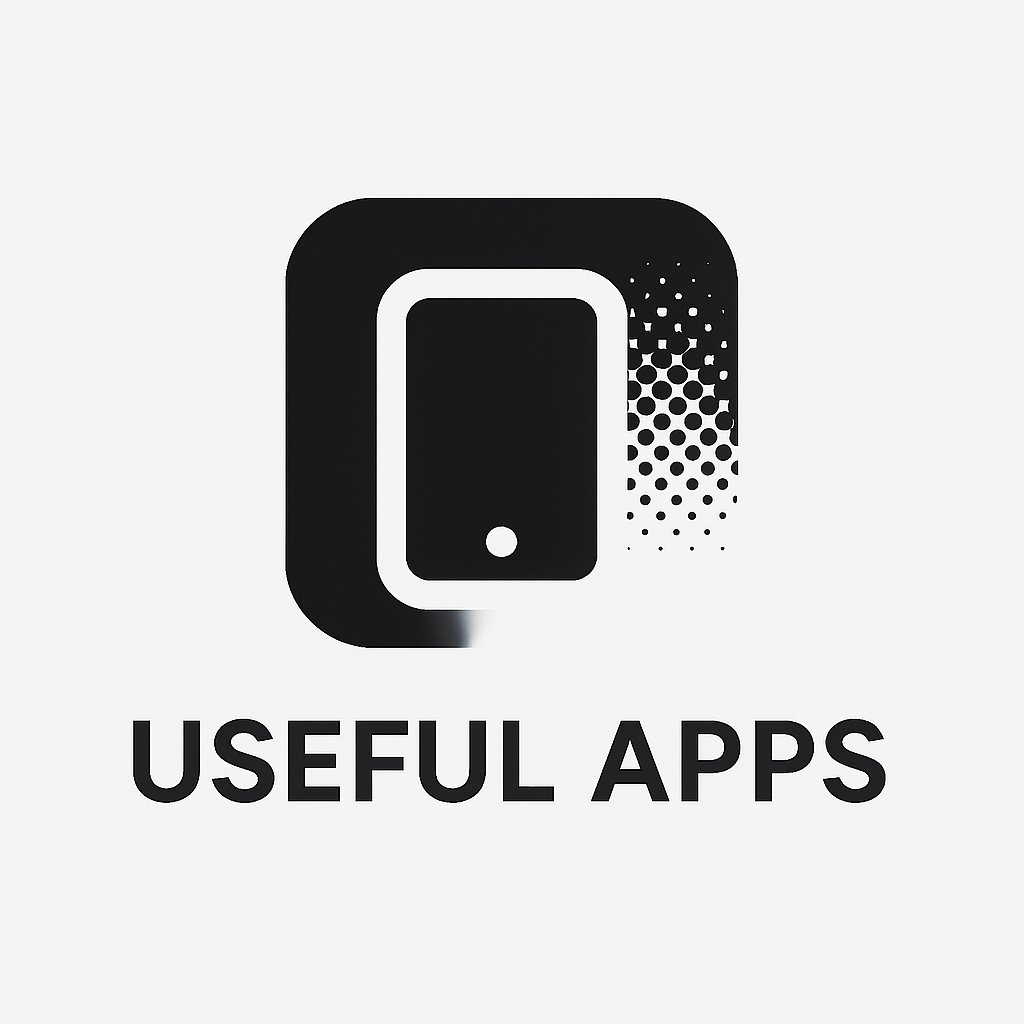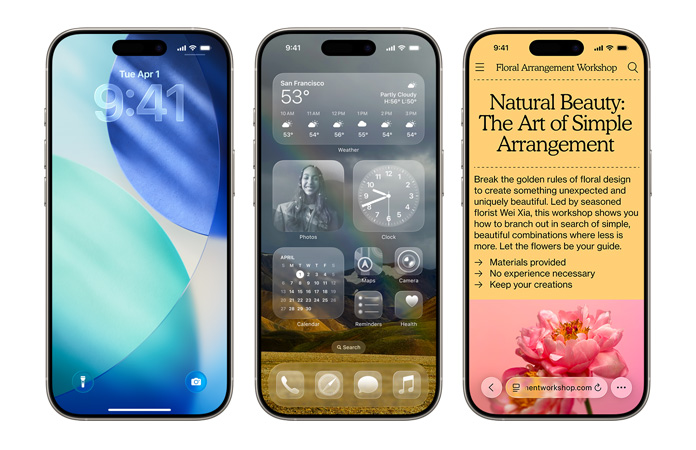Exploring Apple's Liquid Glass UI in iOS 26: A Deep Dive
Apple's most dramatic user interface transformation since the introduction of iOS 7 has arrived. The company's new Liquid Glass design language, unveiled at WWDC 2025, represents a fundamental shift in how we interact with our devices. This isn't just another visual refresh—it's a complete reimagining of digital interfaces that promises to unify the experience across iPhone, iPad, Mac, Apple Watch, and Apple TV.
The announcement has sent ripples through the design community, with developers and designers scrambling to understand what this means for their applications and user experiences. As someone who's been following Apple's design evolution for over a decade, I can confidently say that Liquid Glass is the most ambitious interface overhaul the company has ever attempted.
🌟 Understanding Liquid Glass: More Than Just Eye Candy
At its core, Liquid Glass is Apple's attempt to bring the physical properties of real glass into the digital realm. Imagine interface elements that don't just sit flat on your screen, but appear to have actual depth, weight, and optical properties. When you interact with a button, it doesn't just change color—it refracts light, creates subtle reflections, and responds with the kind of fluid motion you'd expect from a physical object.
The technology behind Liquid Glass builds on years of research into neumorphic design principles, but takes them several steps further. Traditional neumorphism created the illusion of depth through shadows and highlights. Liquid Glass goes beyond this by introducing real-time light simulation, dynamic transparency effects, and motion that responds not just to touch, but to device orientation, ambient lighting conditions, and even the content being displayed.
What makes this particularly fascinating is how Apple has managed to make these complex visual effects feel natural rather than gimmicky. The glass-like elements don't distract from functionality—instead, they enhance the user's understanding of interface hierarchy and interaction possibilities. A primary button might have a stronger refractive quality than a secondary one, immediately communicating its importance without requiring additional visual cues.
The inspiration clearly draws from Apple's work on visionOS, where spatial interfaces demanded new ways of thinking about depth and materiality. However, Liquid Glass adapts these concepts for traditional 2D screens, creating an interesting bridge between current devices and the spatial computing future Apple envisions.
🔁 A Unified Ecosystem Experience
One of the most significant aspects of Liquid Glass is its implementation across Apple's entire ecosystem. This isn't limited to iOS 26—the design language extends to iPadOS 26, macOS Tahoe, watchOS 26, tvOS 26, and even the latest version of visionOS. For the first time in Apple's history, users will experience truly consistent visual language across every device they own.
This ecosystem-wide approach required Apple to solve complex technical challenges. How do you make glass-like effects work on a 1.9-inch Apple Watch screen versus a 32-inch Studio Display? The answer lies in adaptive scaling and context-aware implementation. The core principles remain consistent, but the execution scales appropriately for each device's capabilities and use cases.
On iPhone and iPad, Liquid Glass elements respond to device rotation, creating subtle parallax effects that enhance the sense of depth. The Control Center, for instance, now feels like it's floating above your wallpaper, with individual controls appearing as distinct glass panels that catch and reflect light differently based on their function and state.
Mac users will notice the transformation most dramatically in applications like Safari, where the browser chrome now seamlessly blends with web content through intelligent transparency effects. The dock has been completely reimagined, with application icons appearing to rest on a translucent glass shelf that reflects the desktop beneath it.
Apple Watch faces the unique challenge of implementing these effects on a small, always-on display. Here, Liquid Glass manifests more subtly—through gentle transparency effects in complications and refined depth cues in the interface hierarchy. The Digital Crown now provides haptic feedback that corresponds to the visual glass-breaking effects when scrolling through lists.
✅ Design Principles That Guide the Glass
Apple's Human Interface Guidelines for Liquid Glass introduce several new design principles that developers must master. The primary concept is "hierarchy through depth"—the idea that interface importance should be communicated through varying levels of transparency, refraction, and visual weight rather than traditional methods like color contrast or size differences.
Dynamic adaptation represents another core principle. Unlike static interface elements, Liquid Glass components must respond intelligently to their context. A notification panel might become more opaque in bright sunlight to ensure readability, while becoming more transparent in dark environments to reduce visual intrusion. This context-awareness extends to content as well—reading applications automatically adjust transparency levels to optimize text legibility.
The principle of "honest materiality" ensures that glass effects serve functional purposes rather than existing purely for aesthetic appeal. Every refractive element, every transparency effect, and every depth cue should help users better understand the interface structure and interaction possibilities. This prevents the design from becoming overwhelming or confusing, which was a common criticism of early neumorphic designs.
Apple has also introduced the concept of "temporal coherence"—the idea that interface animations should feel physically plausible. When you dismiss a modal dialog, it doesn't just fade away; it appears to shatter into glass fragments that settle naturally according to physics-based motion. These details might seem minor, but they contribute significantly to the overall sense of interface believability.
⚠️ Addressing Usability Concerns and Accessibility
The introduction of Liquid Glass hasn't been without controversy. Early beta testers and accessibility advocates have raised legitimate concerns about readability and usability, particularly for users with visual impairments or those using devices in challenging lighting conditions.
Apple's response has been comprehensive, introducing new accessibility options that allow users to adjust or disable transparency effects entirely. The "Reduce Transparency" setting, which existed in previous iOS versions, has been expanded into a full suite of customization options. Users can now fine-tune glass effects, adjust refractive intensity, and even switch to a high-contrast mode that maintains the Liquid Glass aesthetic while ensuring maximum readability.
The company has also implemented intelligent contrast adaptation. In situations where transparency might compromise readability—such as when viewing text over complex backgrounds—the system automatically increases opacity and adjusts visual effects to maintain legibility. This happens seamlessly, without user intervention, ensuring that the interface remains both beautiful and functional.
For developers, Apple has provided extensive guidelines on implementing Liquid Glass effects responsibly. The key is understanding when to use these effects and when to prioritize clarity over visual appeal. Critical interface elements like error messages, important notifications, and primary navigation should always maintain sufficient contrast and visibility, regardless of the aesthetic treatment applied to surrounding elements.
🛠 Developer Tools and Implementation Strategies
Apple has equipped developers with a comprehensive suite of tools for implementing Liquid Glass effects. The updated SwiftUI framework includes new view modifiers specifically designed for glass-like materials, while UIKit has gained corresponding APIs for developers working with traditional imperative frameworks.
The most significant addition is the new Material system, which provides pre-configured glass effects optimized for different use cases. Developers can choose from materials like "thin glass" for subtle overlay effects, "thick glass" for prominent interface elements, and "frosted glass" for backgrounds that need to maintain some content visibility while providing clear separation.
Performance optimization has been a major focus, with Apple introducing GPU-accelerated rendering pipelines specifically for glass effects. The company learned from the performance issues that plagued early implementations of blur effects in iOS 7, ensuring that Liquid Glass maintains smooth 120Hz refresh rates even on older devices.
The development process now includes new debugging tools that help developers visualize the layering and depth relationships in their interfaces. Xcode's Interface Builder has been updated with real-time glass effect previews, allowing designers and developers to iterate quickly without constantly building and running their applications.
📱 Impact on App Development and User Experience
For app developers, Liquid Glass represents both an opportunity and a challenge. Applications that embrace the new design language will feel modern and integrated with the system, while those that ignore it risk appearing dated and disconnected from the platform's evolution.
The transition period will be crucial. Apple has indicated that while Liquid Glass is the preferred design direction, they will continue supporting traditional interface styles for the foreseeable future. This gives developers time to thoughtfully integrate glass effects rather than rushing to implement them superficially.
User testing during the beta period has revealed interesting behavioral changes. Users report feeling more engaged with interfaces that use Liquid Glass effects appropriately, describing them as more "alive" and responsive. However, the same users become frustrated when these effects are overused or implemented poorly, suggesting that restraint and purposeful application will be key to successful adoption.
The gaming industry faces unique considerations with Liquid Glass. While the effects can enhance immersion in certain types of games, they can also interfere with gameplay that requires precise visual feedback. Apple has provided game-specific guidelines and APIs that allow developers to selectively disable or modify glass effects during active gameplay while maintaining them in menus and interface elements.
🔮 Looking Forward: The Future of Digital Interfaces
Liquid Glass represents more than just a visual refresh—it's Apple's vision for the future of human-computer interaction. By making digital interfaces feel more physical and tangible, the company is preparing users for a world where the boundaries between digital and physical experiences continue to blur.
This evolution also sets the stage for Apple's rumored AR glasses and other spatial computing devices. Users who become accustomed to glass-like interface elements on traditional screens will find the transition to truly spatial interfaces more natural and intuitive.
The broader industry will undoubtedly take notice. Just as iOS 7's flat design influenced interface trends across platforms, Liquid Glass will likely inspire similar implementations in Android, Windows, and web applications. However, Apple's deep integration between hardware and software gives them a significant advantage in delivering these effects smoothly and consistently.
🎯 Strategic Recommendations for Developers
As we move into the Liquid Glass era, developers should approach adoption strategically. Start by identifying interface elements that would benefit most from glass effects—typically backgrounds, overlays, and secondary interface elements rather than primary content or critical controls.
Invest time in understanding the new Material system and experiment with different glass types to find what works best for your application's specific use cases. Remember that subtlety often works better than dramatic effects, especially in productivity applications where user focus should remain on content rather than interface chrome.
Plan for accessibility from the beginning rather than treating it as an afterthought. Test your implementations with various accessibility settings enabled, and consider providing user controls for adjusting glass effect intensity based on individual preferences and needs.
Most importantly, remember that Liquid Glass is a tool for enhancing user experience, not an end in itself. The best implementations will be those where users appreciate the improved interface clarity and engagement without being consciously aware of the specific effects being used.
Apple's Liquid Glass represents a bold step forward in interface design, one that promises to influence how we think about digital interactions for years to come. By understanding its principles, respecting its constraints, and implementing it thoughtfully, developers can create applications that feel truly at home in this new glass-filled world.
For more detailed information about implementing Liquid Glass in your applications, visit Apple's official developer documentation.


